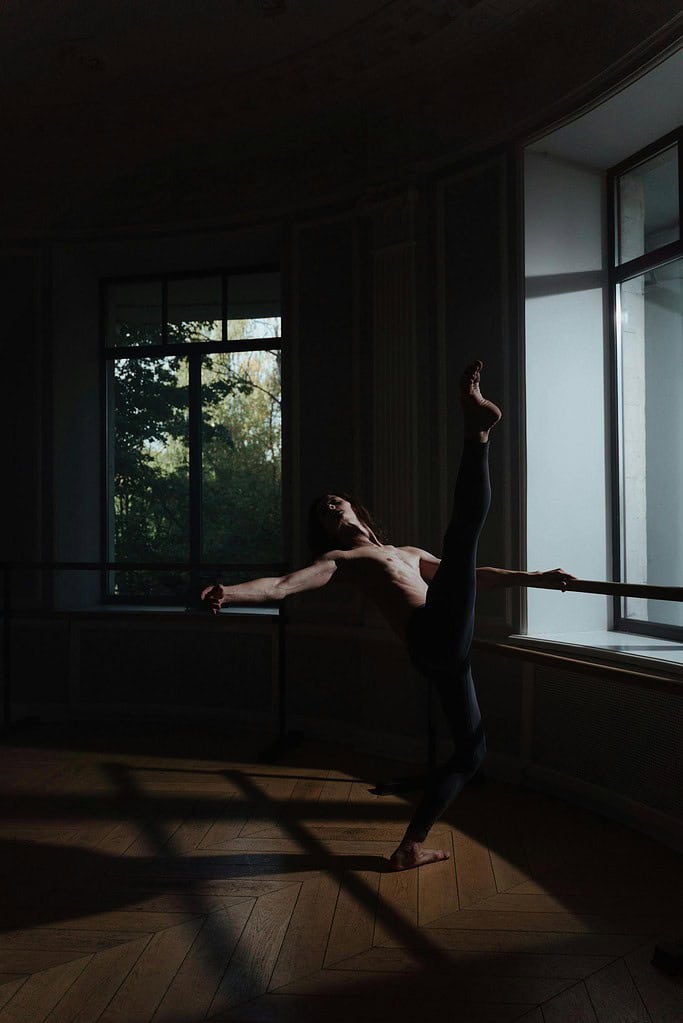Ballet Turnout – How to Perfect Your Technique
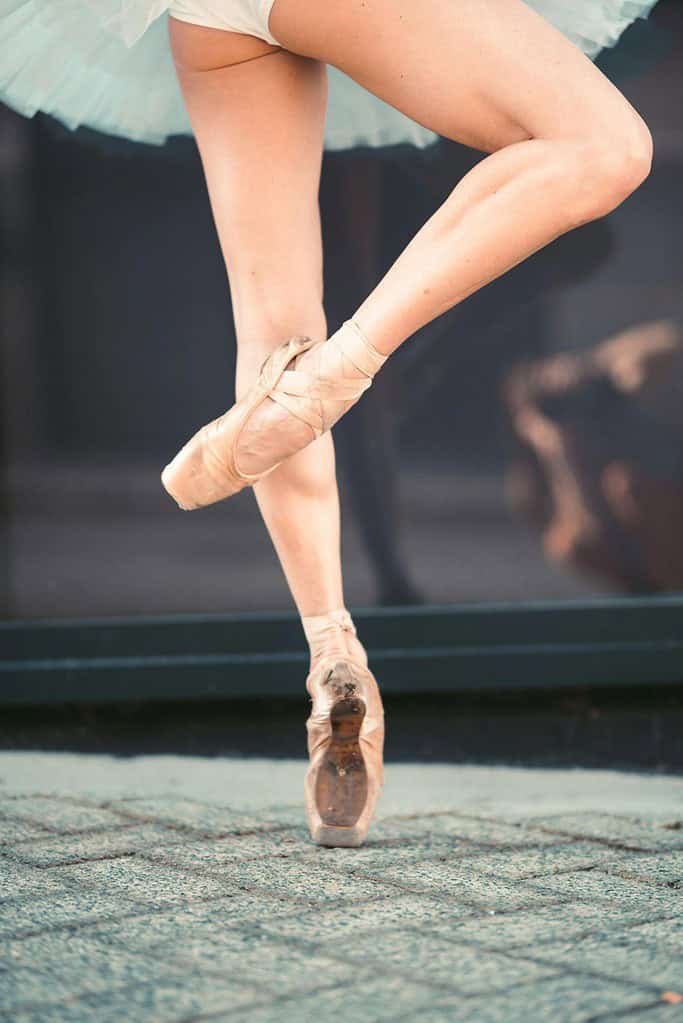
Ballet turnout is a wonderful yet challenging aspect of ballet technique!
Some dancers are naturally blessed with open hip sockets that allow for easier rotation of the legs, while others must constantly work to maintain the position.
Although some degree of turnout is determined by genetics and bone structure which can’t be changed, you can still significantly improve your turnout.
The best way to do this is by focusing on how you engage your muscles and hold your rotation.
By working smartly and consistently, you can maximise your turnout.
In this blog post, I’ll provide you with beginner and professional tips to master your ballet turnout technique.
WHAT IS A BALLET TURNOUT?
Ballet turnout or external rotation, is a dancer’s ability to rotate their legs outward from the hip joints, creating the iconic position essential to classical ballet.
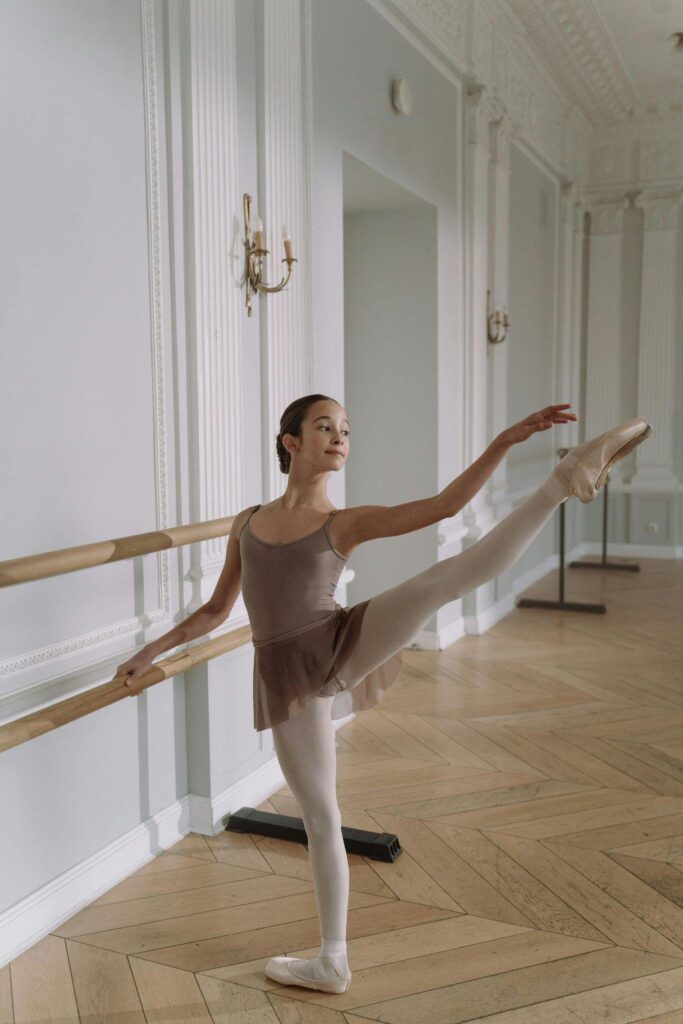
This movement requires the coordination of several muscles, including the hips, deep rotators, glutes, legs, and even the ankles.
Turnout must be controlled and sustained through all positions, from exercises at the barre to jumps and turns in the centre.
WHY IS BALLET TURNOUT IMPORTANT?
Turnout is not only for aesthetic purposes, but it’s also crucial for maintaining proper alignment in ballet.
When performed correctly, it allows the body to move fluidly and efficiently, while also protecting the joints.
THREE POINTS OF ROTATION IN BALLET TURNOUT
There are three critical points of rotation involved in turnout:
HIPS
Your hips are the primary source of rotation, where external rotation begins.
The deep hip muscles, particularly the deep rotators, play a significant role in creating this rotation whereas the gluteal muscles provide strength and support to hold the turnout position.
KNEES
Your knees provide secondary support, ensuring the leg moves in alignment with the hips.
ANKLES
Your ankles are the final point of rotation, helping to maintain foot alignment and distribute the rotation through to the toes.
You need to be mindful not to roll your ankles inward or outward, as improper foot alignment can lead to instability and injury.
COMMON MISTAKES
Here are three common ballet turnout mistakes that can be easily avoided with practice and precision.
FORCING TURNOUT FROM THE FEET
The first common mistake for ballet turnout is forcing the turnout by rotating from the feet rather than from the hips.
This places strain on the knees and ankles, leading to misalignment and increasing the risk of injury.
Turnout should always originate from the hips, and it’s more important to work within your natural range of turnout rather than to force it.
Forcing it beyond your limits as this can have long-term negative effects on your body.
As you build strength and flexibility, your ability to improve, hold, and maintain your rotation will naturally increase.
So be smart and patient and you’ll benefit more from this approach in the long run.
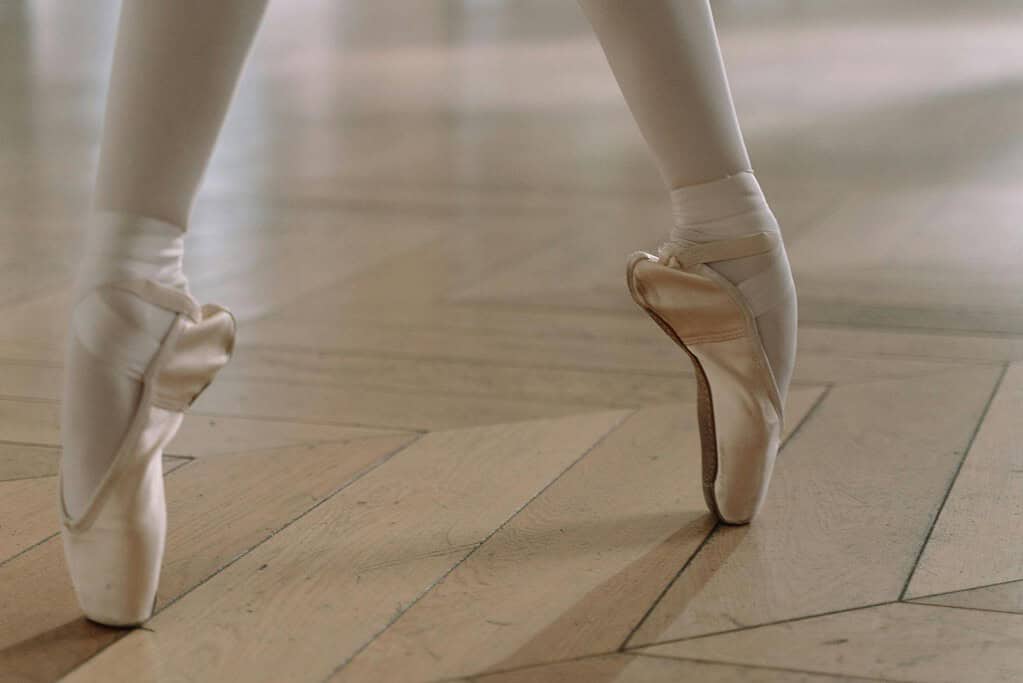
RELYING ON FLEXIBILITY FIRST
The second common mistake is relying too much on flexibility rather than properly engaging your muscles to hold turnout.
While flexibility is important, it’s the strength of your deep rotators, glutes, and core that maintain and control the rotation.
Focusing solely on stretching without strengthening can lead to instability and improper alignment, making it difficult to sustain turnout during movement.
For example, if you can’t maintain turnout while jumping, you’ll struggle to achieve a beautiful position, and it will affect your takeoff, landing, and overall elevation.
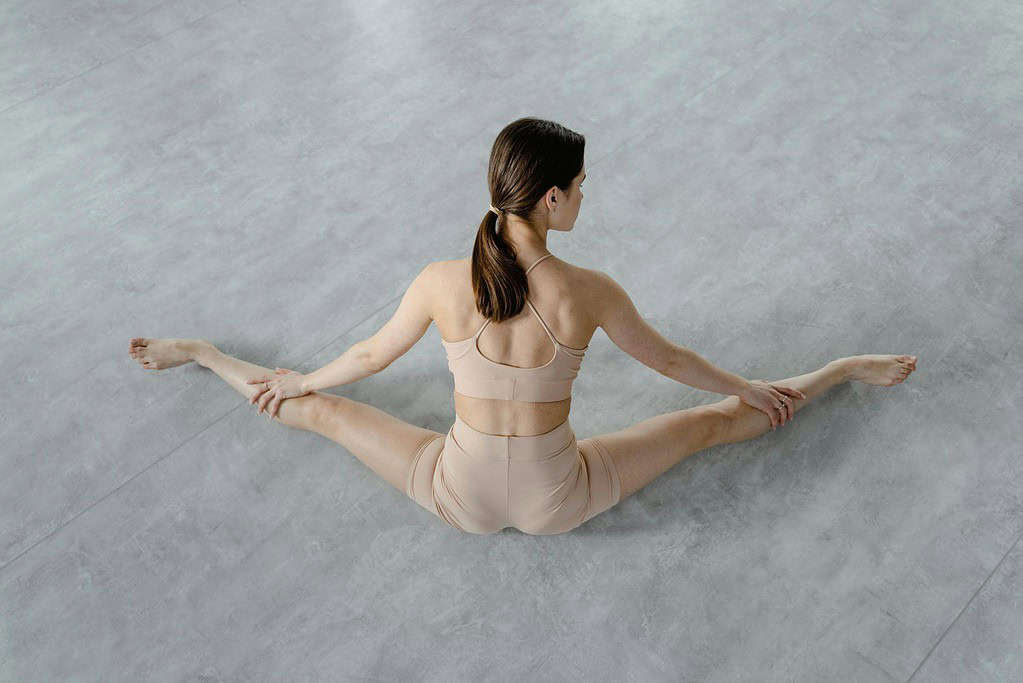
OVER ROTATING THE KNEES
The third common mistake is when dancers attempt to force more turnout by over-rotating the knees.
Similar to forcing turnout from your feet, you can also make the mistake of forcing it from your knees.
While the knees are an important point of rotation, external rotation should always be initiated from the hips.
The knees must track and remain aligned over the toes to ensure proper form.
This alignment creates a beautiful line, provides stability and helps prevent knee and ankle injuries that can result from incorrect positioning.
TIPS FOR BEGINNER DANCERS
Here are three tips for beginner dancers to incorporate into your daily practice to achieve the correct ballet turnout technique.
TIP 1 – STRENGTHEN YOUR HIPS AND GLUTES
To enhance your ballet turnout, it’s essential to strengthen your hip and glute muscles.
Focusing on exercises that target these areas will improve your stability and control, allowing you to hold your rotation effectively while dancing.
Kind of every dancer’s dream, right?
RECOMMENDATION
The three best Pilates-based exercises for improving hip and glute strength are:
These exercises specifically target the muscles essential for developing strength in the external rotators, glutes, and outer hip muscles, while also enhancing overall hip stability and control.
TIP 2 – STRETCHES TO DEEPEN YOUR TURNOUT
Incorporating specific stretches into your routine can help deepen your turnout, particularly stretches that target the hip flexors, quadriceps, and inner thighs.
RECOMMENDATION
The following stretches can help open up tight areas that may be restricting your natural range of motion:
By specifically targeting these areas, you can release tension and create more space in the joints.
This will facilitate better turnout and a greater range and freedom of movement.
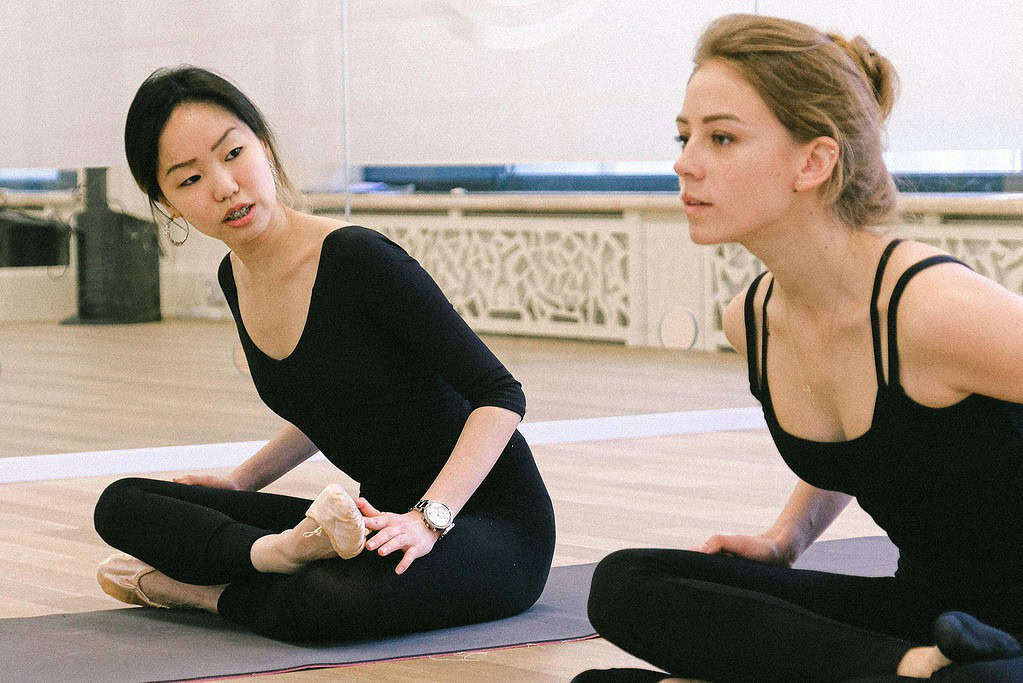
TIP 3 – WORK IN PARALLEL
Did you know that working in parallel can help strengthen your turnout muscles?
Working in parallel allows you to work the muscles in both external and internal rotation, creating a more balanced strength foundation.
Focusing solely on external rotators can lead to muscle imbalances.
But by training in parallel, you activate a wider range of muscles, ensuring both the internal and external rotators are equally developed.
This means better control, stability, and muscle endurance.
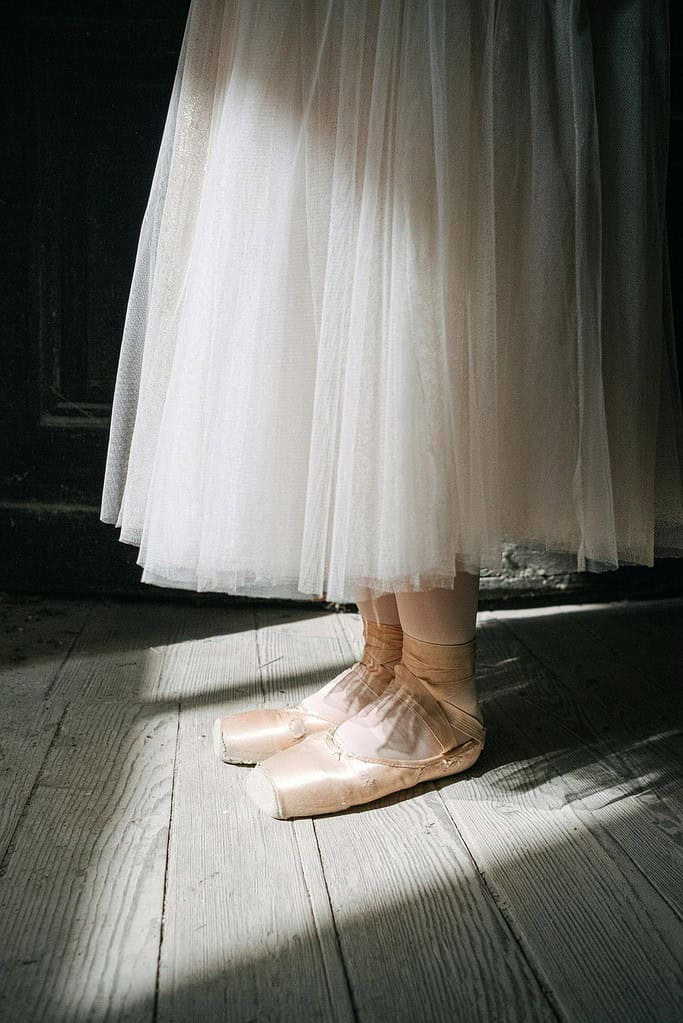
RECOMMENDATION
Just like you perform tendus in turned-out positions from either 1st or 5th position, try incorporating a short barre where you do tendus in parallel.
While it might feel strange at first, this approach can greatly help build strength in your internal rotators.
TIPS FOR ADVANCED DANCERS
Here are three tips for advanced dancers, that build on the basic principles of ballet turnout, that can be incorporated into your daily practise to perfect this movement further.
TIP 1 – USE A THERABAND
By adding a Theraband to conditioning and strengthening exercises, you can further target, isolate, and strengthen the deep rotator muscles involved in external rotation.
The resistance provided by the band intensifies the engagement of these muscles, making it an excellent tool for building the strength necessary to maintain turnout.
RECOMMENDATION
Tie a Theraband around the barre to create a loop, then place your working leg inside the band in retiré position.
With your standing leg in a turned-out position and your working leg starting in parallel retire, slowly open the working leg outward to move from parallel to a turned-out retire.
The resistance of the Theraband adds intensity, making the exercise more challenging, but you’ll really feel the external rotators and glute muscles working hard to maintain control.
Aim for 2 sets of 6 repetitions on each leg.
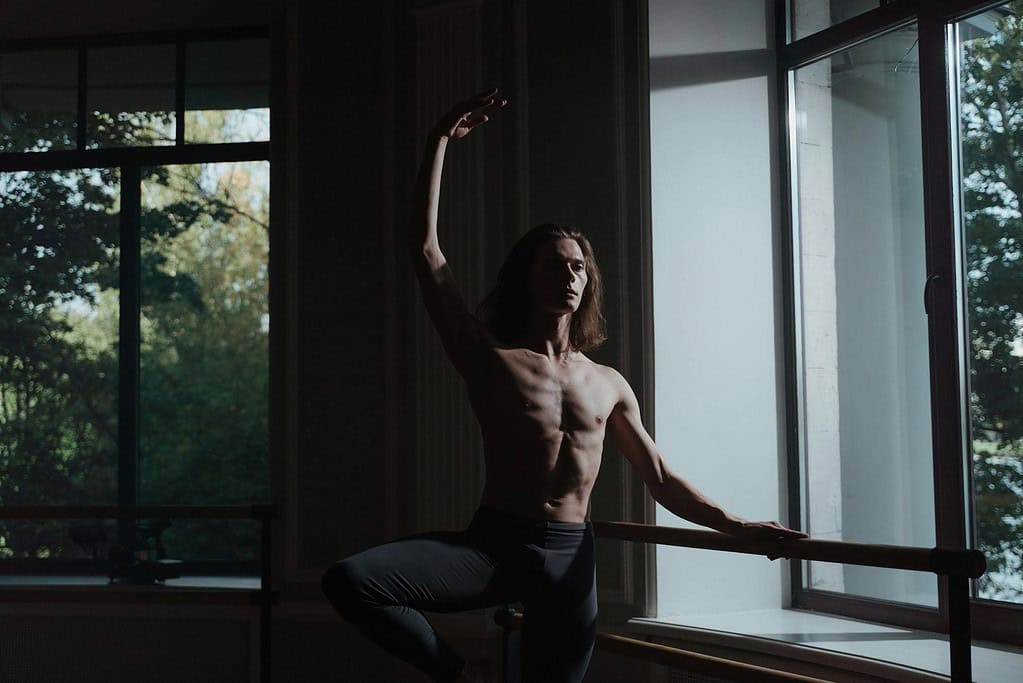
TIP 2 – ENGAGE THE CORE FOR STABILITY
Advanced turnout requires strong legs and a strong core for overall stability and control.
A solid core supports proper alignment and prevents collapsing through the hips and lower back, which can negatively affect turnout.
RECOMMENDATION
While you can work specifically on core strengthening exercises, the most effective practice for dancers is incorporating exercises that target the core while working other parts of the body simultaneously.
This is incredibly beneficial, especially with the legs in a turned-out position.
This approach challenges the body to control movement while maintaining rotation, which mirrors the demands of classical ballet.
By strengthening your core in coordination with your turnout, you’ll improve your overall stability, alignment, and control while dancing.
For example, you could incorporate a traditional plank hold and add lifting one leg at a time into a small turned-out arabesque leg lift, alternating between legs.
This variation challenges your core but also mimics the movement of a tendu derrière, engaging your glutes and deep rotators while maintaining turnout and working your core muscles simultaneously.
TIP 3 – FLOOR BARRE TRAINING
Floor barre is an incredibly valuable tool for dancers aiming to improve their turnout, technique, and overall control.
Working on the floor provides a different sensation compared to standing.
In essence, it removes the challenge of balancing, allowing you to focus fully on the mechanics of your movements.
This grounded approach helps connect the mind and body, encouraging deeper awareness and precision in engaging the correct muscles.
It’s a great way to:
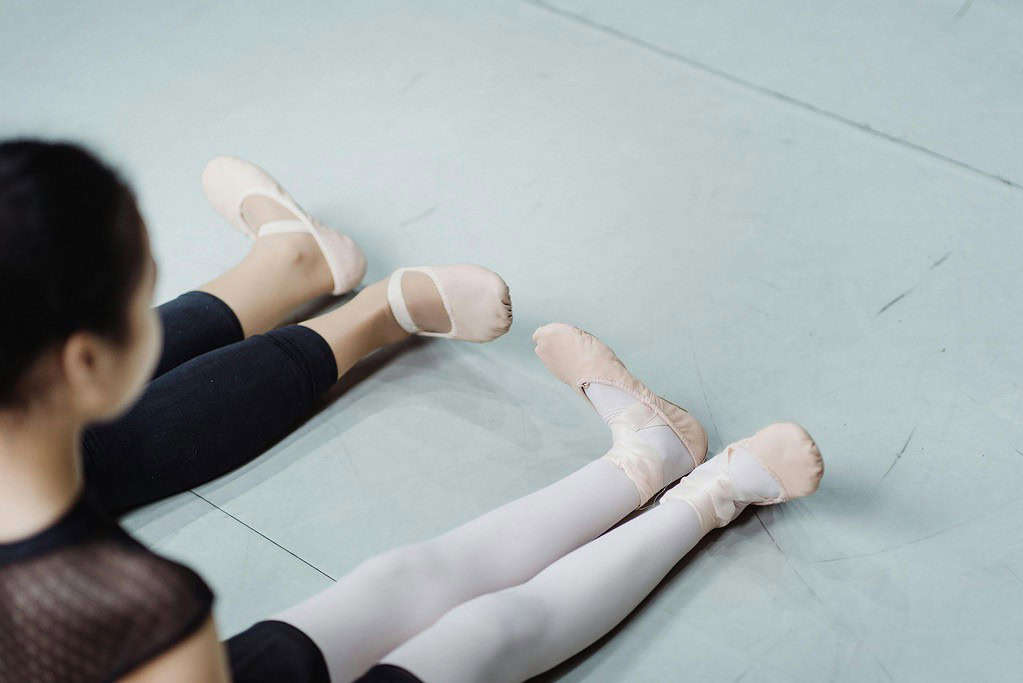
RECOMMENDATION
There are many different styles of floor barre available, including:
If you can’t purchase an old DVD or take an online class, there are plenty of free videos on YouTube offering floor barre classes.
I did a lot of floor barre, and I can honestly say it helped me tremendously with my turnout and strength.
On the floor, you can’t rely on forcing anything-everything has to be held properly!
WRAP UP
Don’t be disheartened if you don’t achieve a flat turnout or 180 degrees of rotation.
You can still dance beautifully with excellent technique, control, and alignment, even with minimal natural rotation.
What truly matters is your strength and your ability to maintain and hold your rotation while dancing.
Remember, ballet turnout is a coordinated effort involving the hips, knees, and ankles.
These elements work together to create a safe and aesthetically pleasing rotation, which is essential for ballet.
With this understanding and the right approach to your training, you’ll be able to maximise your rotation in no time.
Stay focused and dedicated, and your hard work will pay off!
